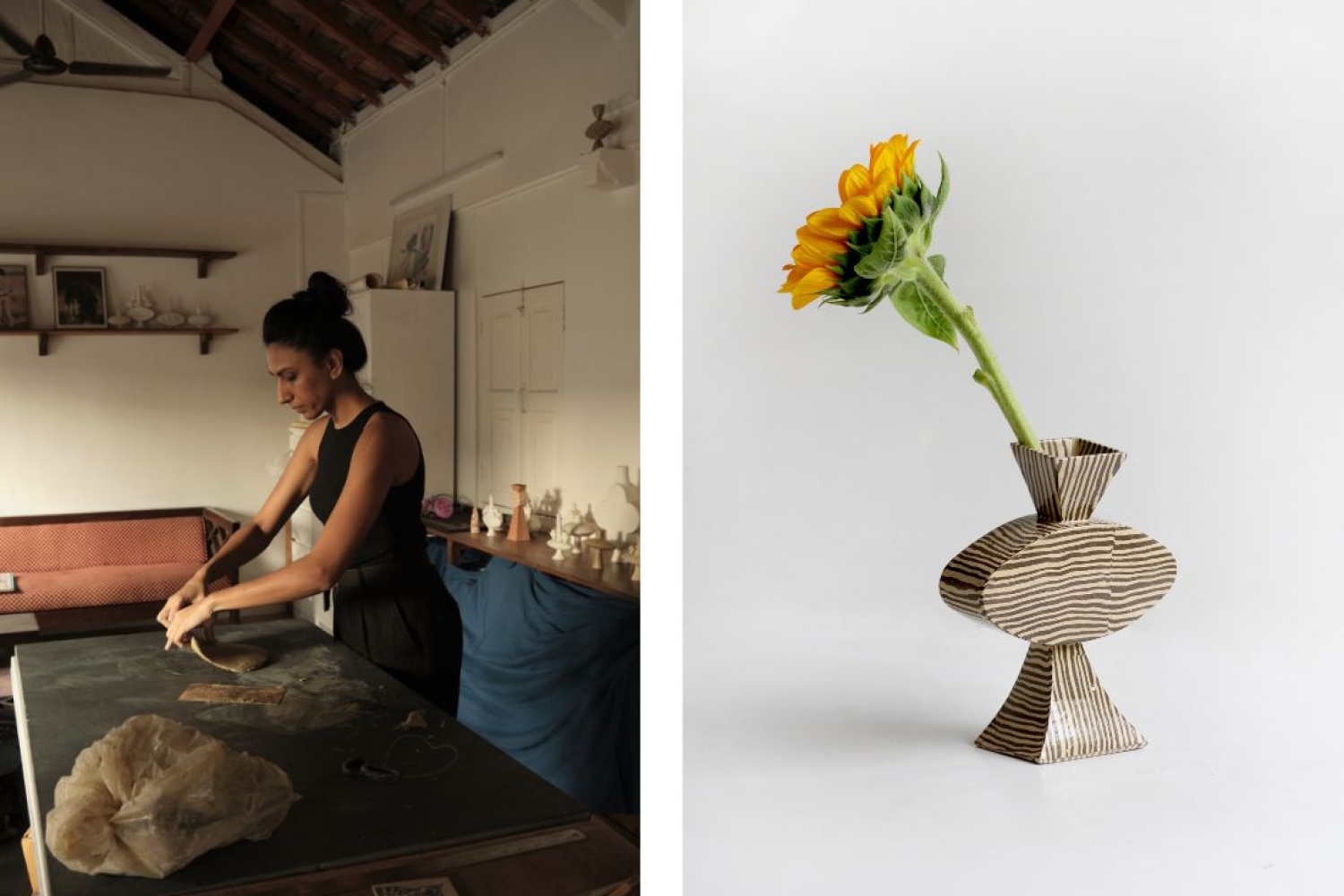
Photo Credits: Preetika Menon

Photo Credits: Preetika Menon
Tosha Jagad, the founder of Studio Tosh, has carved out a niche in the world of ceramics, transitioning from a successful career in graphic design. Her journey reflects a deep passion for creative exploration and a relentless pursuit of artistic expression. We take a closer look at her transition to ceramics, her design philosophy, and the techniques that shape her work.
THE LEAP FROM GRAPHIC DESIGN TO CERAMICS
Tosha’s path from graphic design to ceramics wasn’t a straightforward one. Her love for clay existed alongside her graphic design career, but making a full transition wasn’t simple. ‘While I was a graphic designer, I always kept going back to clay. I knew that I wanted to do some- thing with it, but making that shift wasn’t very easy,’ she recalls. The turning point came around 2017 when Tosha decided to gain practical experience in the field by working with a ceramic artist.
This hands-on experience was pivotal. ‘I thought maybe I should work with a ceramic artist to get a fair idea of how it is to actually run a studio.’ This decision led her to set up a small studio at her father’s office, where she began working with her own equipment. However, when her father decided to sell the space, Tosha faced a critical juncture. ‘The circumstances made me choose. It wasn’t like I had all the time in the world to plan. I had to take the leap and set up my own space.’
DEVELOPING DESIGN AESTHETICS
Tosha’s background in graphic design has significantly influenced her ceramics. 'Any designer who starts using another medium will always find that their previous learning reflects in their work.' This blending of disciplines is evident in her Block Cat series. Tosha explains, ‘I started sketching a cat I was fostering and then translated those sketches into clay. The Block Cat series was born from experimenting with reducing and refining forms.’ The process involved simplifying and cleaning up initial designs. ‘I kept experimenting with basic forms and eventually arrived at the Block Cat. The designer brain in me looked at how I could extend the form and use it in different ways. It was important for me to find a way to use the shape to create more.’ This approach reflects her graphicdesign sensibilities, emphasizing clean lines and practical functionality.
MASTERING NERIKOMI TECHNIQUE
One of the standout techniques in Tosha’s ceramics is Nerikomi, a Japanese method of stacking and slicing colored clay. ‘Nerikomi involves stacking clay in various ways and then cutting through it to reveal patterns. The challenge is to work backwards to achieve the desired design,’ Tosha explains. Her affinity for clean, simple forms and patterns is influenced by her graphic design background. ‘I gravitated towards checks and lines, which align with my design sensibilities.’
THE IMPACT OF WORKING WITH CLAY
Tosha reflects on how working with clay has subtly impacted her life and work habits. ‘Clay teaches you patience. Unlike graphic design, where you see immediate results, ceramics involves a lengthy process. You have to wait for days for drying, glazing, and firing. The entire process can take a month before you see the final piece.’ This contrast from the instant feedback of digital design has instilled a new appreciation for the creative process.
EXPLORING NEW TECHNIQUES AND FUTURE PROJECTS
Looking ahead, Tosha is excited about pushing the boundaries of her ceramic practice. ‘I want to make larger pieces. That’s something I’ve started working on and am really excited about.’ Additionally, she’s enthusiastic about further exploring the possibilities within Nerikomi. ‘There’s so much more to explore within this technique. I want to continue experimenting with different ideas, glazes, and methods.’
Words Paridhi Badgotri
Date 13.09.2024